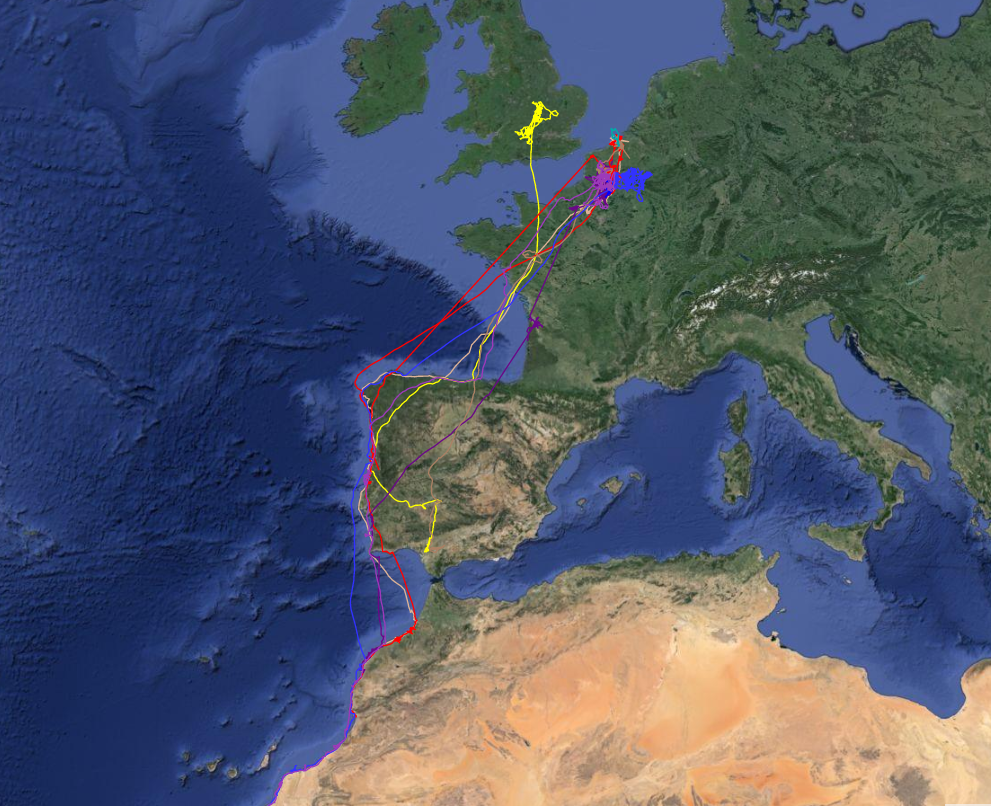LifeWatch.be GPS tracking network for large birdsIn the framework of the Flemish contributions to the LifeWatch infrastructure, a high-tech sensor network was installed to better monitor the habitat use and migration patterns of large birds, such as the European Herring Gull (Larus argentatus Pontoppidan, 1736), the Lesser Black-backed gull (Larus fuscus Linnaeus, 1758) and the Western Marsh Harrier (Circus aeruginosus (Linnaeus, 1758)). During their breeding season, several male and female Lesser Black-backed Gulls were tagged in the harbor of Zeebrugge (Belgium), European Herring Gulls in the harbor of Ostend (Belgium), and Western Marsh Harriers in the Krekengebied (North of East-Flanders, Belgium). Flight data from the last 4 days are visualized on the LifeWatch.be website for each species. Since the establishment of the tracking network, the GPS transmitters generated a lot of data, revealing some interesting migration patterns and odd, individualistic behavior of the tagged birds. All "historical" data (since June 2013) is also made available through the LifeWatch.be website. |
All equipment used in the LifeWatch.be GPS tracking network for large birds is developed by the Institute for Biodiversity and Ecosystem Dynamics (IBED) at the University of Amsterdam: the UvA Bird Tracking System (UvA-BiTS). The research of the LifeWatch.be GPS tracking network for large birds is led by the Research Institute for Nature and Forest (INBO) in collaboration with the Terrestrial Ecology Unit (TEREC) at the University of Ghent, and the University of Amsterdam (LifeWatch coordinator in the Netherlands). The Flanders Marine Institute (VLIZ) is responsible for the installation, maintenance and data flows of the sensor network.
The bird tracking data is also available through the LifeWatch Data Explorer for Bird GPS tracking data: http://rshiny.lifewatch.be/uva-bird-data/

